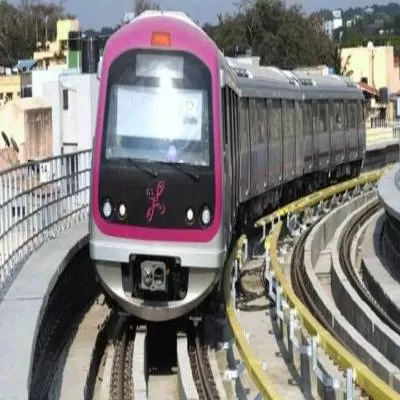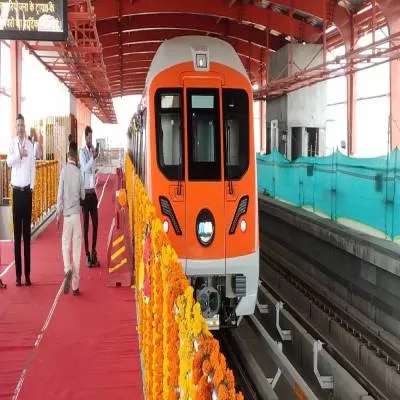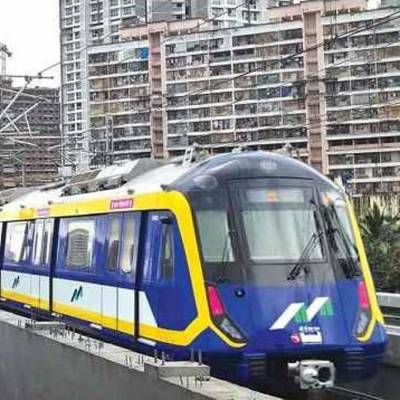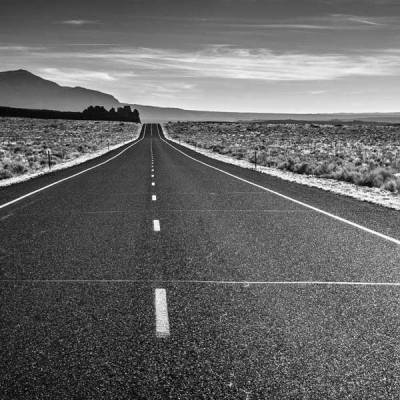- Home
- Infrastructure Energy
- POWER & RENEWABLE ENERGY
- Reservoir to the Rescue
Reservoir to the Rescue
As a phrase, 'time management' doesn't even begin to describe this feat. This June, Alstom successfully achieved the synchronisation and full load of three 77 MW units of the Chamera III hydropower plant (HEP) project in three weeks. This was achieved much ahead of the scheduled time of three months after National Hydroelectric Power Corporation (NHPC) made water available at the required level in the dam. With a total of 233.6 MW, three units have already been handed over officially to the NHPC, who has declared the start of commercial operation. Also, Alstom completed the trial run period of 30 days in the first week of August 2012.
Step 1
Having bagged the Chamera III HEP contract from NHPC in 2007, the scope of work for Alstom involved turnkey execution of the electromechanical section comprising hydro turbines, generators and auxiliaries. "Consequently," Alain Spohr, Unit Managing Director, Alstom Hydro India, says, "...the erection work, inaugurated by then power minister Sushil Kumar Shinde, started in May 2008." The scope of work included supply on a turnkey basis of the electromechanical equipment, including turbine, generator, MIV, governing system, control and protection system, GSU transformer, GIS and XLPE cable, along with other BOP packages and transportation, installation, testing and commissioning services.
Milestones follow
To ensure the successful completion of this project, no stone has been left unturned; several milestones add to the list. Spohr tells us, in any project, normally, E&M erection works are undertaken after completing the relevant civil work. However, considering the various factors at play and the aim to continuously meet the customer's commitment towards various forums, including ministries, E&M works were carried out in parallel to civil works. Although this created challenging conditions for site installation, the feat was successfully achieved.
Also, an important commissioning test for the Chamera III plant was the spinning of all three 77 MW Francis vertical turbines. This was effectively achieved at the rated speed of 333 rpm in less than 10 hours. Moreover, owing to non-availability of 'control building', a temporary control room was set up on the service bay; the dry commissioning was almost carried out completely from here. The biggest advantage was that the establishment of the room brought forward the commissioning of the units.
Tech pro
As a technology leader in the segment it operates in, Spohr tells us that Alstom made full use of its technological expertise in the fruitful execution of the project. One example is the development and validation of the hydraulic design through model testing. This ensures optimum utilisation of hydraulic energy available at the Chamera III scheme from the Ravi river basin throughout the year. Also, a complete layout of power house equipment was designed to suit the prevailing civil constraints of an underground plant (small power house cavity and weak soil strata). Specially crafted turbine technologies have been developed and proven materials have been used to ensure maximum productive life of critical components against typical Himalayan river water qualities (containing high abrasive silt particles).
To ensure safe operations for prevailing grid conditions (a sometimes unstable grid), a highly efficient and compact generator and other electrical equipment have been developed. Moreover, complete E&M equipment has been designed to ensure speedy dismantling and installation during routine and capital maintenance.
Key to early completion
Chamera III is the first project executed by Alstom on a turnkey basis from its Indian unit in Vadodara. Emphasising on the structural details, Spohr highlights, "It is a vertical Francis turbine with 3 pc generator shaft design and a thrust bearing on the top. The upper bracket of the turbine is heavier than the lower bracket. Also, the control room of the project is on the same level as the machine hall."
Certainly, a well-founded strategy lies behind the success of this project. As Spohr tells us, this included the 'feedback of experience' of other dry commissioning projects, which enabled Alstom as the contractor to make the system entirely ready and complete. Also, an engineering team visited the site and a package-wise quality review was conducted to ensure systematic completion of the project. Necessary actions were taken based on the observations noted by the teams.
To ensure the completion of all action plans, a series of special internal reviews were conducted with the project team and functional HODs. A dedicated resource allocated to the project team attended to all vendor-related support during dry commissioning. Strong cooperation with the customer was maintained to assess correctness of erection or commissioning and ensure maximal anticipation. The customer was not just notified about the readiness for spinning, but a special design team from the corporate office evaluated and validated the status well in advance. A special engineering team was formed to respond to urgent requirements at site on a 24/7 basis. And finally, all major wet commissioning sequences were checked through a trial in SCADA and the units were kept ready well before the actual water was made available.
Overcoming the odds
In Spohr's view, the completion of the Chamera III plant three months ahead of schedule is testament to the team's exemplary work and coordination. However, the road to success was filled with various challenges. One of these included the strong co-activity that existed with civil works during commissioning and erection. Second was the need to maintain a high standard of EHS (environmental health and safety). Continuous follow-ups and constant pushing made it possible to maintain the EHS at a high level.
Highlighting the biggest USP of this project, Spohr says, "The Chamera III dam acts as a reservoir for two other downstream dams and feeds the required quantum of water during the lean period." This feature provides a lot of additional stability to the northern grid. Truly, a project worthy of a salute!
Project details:
Project: Chamera III
Cost: Approx Rs 3,500 million (for Alstom as an E&M contractor)
Completion year: 2012
E&M contractor: Alstom. Tel: 0120-479 0000. Fax: 0120-479 1140. Website:www.alstom.com
Civil works: HCC. Tel: 022-2575 1000. Fax: 022-2577 5732. Website: www.hccindia.com
Hydro-mechanical works: Om Metal. Tel: 011-2956 5552. Fax: 011-2956 5551. E-mail:info@ommetals.com Website: www.ommetals.com
To share details of any project with us, write in at feedback@ASAPPmedia.com
Alstom recently completed and handed over the 233.6 MW Chamera III hydroelectric power plant in Himachal Pradesh to NHPC in three weeks, much ahead of the scheduled time of three months. CW discovers how.As a phrase, 'time management' doesn't even begin to describe this feat. This June, Alstom successfully achieved the synchronisation and full load of three 77 MW units of the Chamera III hydropower plant (HEP) project in three weeks. This was achieved much ahead of the scheduled time of three months after National Hydroelectric Power Corporation (NHPC) made water available at the required level in the dam. With a total of 233.6 MW, three units have already been handed over officially to the NHPC, who has declared the start of commercial operation. Also, Alstom completed the trial run period of 30 days in the first week of August 2012.Step 1Having bagged the Chamera III HEP contract from NHPC in 2007, the scope of work for Alstom involved turnkey execution of the electromechanical section comprising hydro turbines, generators and auxiliaries. Consequently, Alain Spohr, Unit Managing Director, Alstom Hydro India, says, ...the erection work, inaugurated by then power minister Sushil Kumar Shinde, started in May 2008. The scope of work included supply on a turnkey basis of the electromechanical equipment, including turbine, generator, MIV, governing system, control and protection system, GSU transformer, GIS and XLPE cable, along with other BOP packages and transportation, installation, testing and commissioning services.Milestones followTo ensure the successful completion of this project, no stone has been left unturned; several milestones add to the list. Spohr tells us, in any project, normally, E&M erection works are undertaken after completing the relevant civil work. However, considering the various factors at play and the aim to continuously meet the customer's commitment towards various forums, including ministries, E&M works were carried out in parallel to civil works. Although this created challenging conditions for site installation, the feat was successfully achieved.Also, an important commissioning test for the Chamera III plant was the spinning of all three 77 MW Francis vertical turbines. This was effectively achieved at the rated speed of 333 rpm in less than 10 hours. Moreover, owing to non-availability of 'control building', a temporary control room was set up on the service bay; the dry commissioning was almost carried out completely from here. The biggest advantage was that the establishment of the room brought forward the commissioning of the units.Tech proAs a technology leader in the segment it operates in, Spohr tells us that Alstom made full use of its technological expertise in the fruitful execution of the project. One example is the development and validation of the hydraulic design through model testing. This ensures optimum utilisation of hydraulic energy available at the Chamera III scheme from the Ravi river basin throughout the year. Also, a complete layout of power house equipment was designed to suit the prevailing civil constraints of an underground plant (small power house cavity and weak soil strata). Specially crafted turbine technologies have been developed and proven materials have been used to ensure maximum productive life of critical components against typical Himalayan river water qualities (containing high abrasive silt particles).To ensure safe operations for prevailing grid conditions (a sometimes unstable grid), a highly efficient and compact generator and other electrical equipment have been developed. Moreover, complete E&M equipment has been designed to ensure speedy dismantling and installation during routine and capital maintenance.Key to early completionChamera III is the first project executed by Alstom on a turnkey basis from its Indian unit in Vadodara. Emphasising on the structural details, Spohr highlights, It is a vertical Francis turbine with 3 pc generator shaft design and a thrust bearing on the top. The upper bracket of the turbine is heavier than the lower bracket. Also, the control room of the project is on the same level as the machine hall.Certainly, a well-founded strategy lies behind the success of this project. As Spohr tells us, this included the 'feedback of experience' of other dry commissioning projects, which enabled Alstom as the contractor to make the system entirely ready and complete. Also, an engineering team visited the site and a package-wise quality review was conducted to ensure systematic completion of the project. Necessary actions were taken based on the observations noted by the teams.To ensure the completion of all action plans, a series of special internal reviews were conducted with the project team and functional HODs. A dedicated resource allocated to the project team attended to all vendor-related support during dry commissioning. Strong cooperation with the customer was maintained to assess correctness of erection or commissioning and ensure maximal anticipation. The customer was not just notified about the readiness for spinning, but a special design team from the corporate office evaluated and validated the status well in advance. A special engineering team was formed to respond to urgent requirements at site on a 24/7 basis. And finally, all major wet commissioning sequences were checked through a trial in SCADA and the units were kept ready well before the actual water was made available.Overcoming the oddsIn Spohr's view, the completion of the Chamera III plant three months ahead of schedule is testament to the team's exemplary work and coordination. However, the road to success was filled with various challenges. One of these included the strong co-activity that existed with civil works during commissioning and erection. Second was the need to maintain a high standard of EHS (environmental health and safety). Continuous follow-ups and constant pushing made it possible to maintain the EHS at a high level.Highlighting the biggest USP of this project, Spohr says, The Chamera III dam acts as a reservoir for two other downstream dams and feeds the required quantum of water during the lean period. This feature provides a lot of additional stability to the northern grid. Truly, a project worthy of a salute!Project details:Project: Chamera IIICost: Approx Rs 3,500 million (for Alstom as an E&M contractor)Completion year: 2012E&M contractor: Alstom. Tel: 0120-479 0000. Fax: 0120-479 1140. Website:www.alstom.comCivil works: HCC. Tel: 022-2575 1000. Fax: 022-2577 5732. Website: www.hccindia.comHydro-mechanical works: Om Metal. Tel: 011-2956 5552. Fax: 011-2956 5551. E-mail:info@ommetals.com Website: www.ommetals.comTo share details of any project with us, write in at feedback@ASAPPmedia.com






















